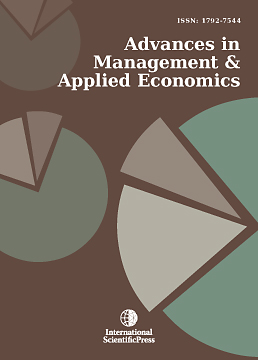Advances in Management and Applied Economics
Relocation of Investment and Trade Diversification in APEC: Trends and Challenges for Mexico
-
 [ Download ]
[ Download ]
- Times downloaded: 9838
Abstract
To understand the genesis of trade is necessary to go back to the XIV and XV centuries to know that it is in Italy where accelerated development of merchant capital is observing. The fast trade between cities such as Milan, Genova and Florence results in economic conditions of trade that began to spread to other cities like Bremen, Hamburg and Lubeck in the Baltic region, which led to the rise of capitalism. So, we cannot think in capitalism without thinking in trade. Later, with the great discovers of the period, in the XVI century, Spain becomes a world power by its conquests in America (Mexico and Peru) and in Europe (Belgium, Netherlands, much of Italy, among other countries). However, by the XVIII century, Holland was the model of capitalist nation. It´s in those centuries that the economic doctrine of mercantilism emerges based on historical and economic aspects that characterize the fall of feudalism, promoting foreign trade, (sell more and buy less). This doctrine (practice) comes together with a nationalist stance in a protectionist direction of its own interests based on wealth generation. This contradiction is still observing today with the domestic markets protectionism, relocating the investment and provoking the argue of diversification: The nowadays main challenge for APEC. At the same time APEC has to take into account that, far from encouraging a free global trade, free trade agreements promote protectionism. Therefore, negotiations as the Trans-Pacific Partnership Agreement (TPP) and a possible Free Trade Area of Asia-Pacific (FTAAP), aim at the protection of a regional space that is opposed to free trade that is supported economically by the classical theory. Trade agreements promotes trade liberalization among its members, but with restrictions for the externals, limiting this way free trade and current philosophy of capitalism and globalization itself. We find that current trading conditions are based on economic activities at four or five centuries ago, when trade comes to its final stage of feudalism to become the dominant category of capitalist mode of production, in what there is a sort of perverse association between protectionism and free trade. Nowadays Mexico is suffering some investment relocation and facing up the idea of trade diversification as component for its own economic development taking into account exports growing up to the APEC region, where are located the most important economies of XXI century.
JEL classification numbers: D24, O47, O50
Keywords: Investment; relocation; APEC; Mexico
